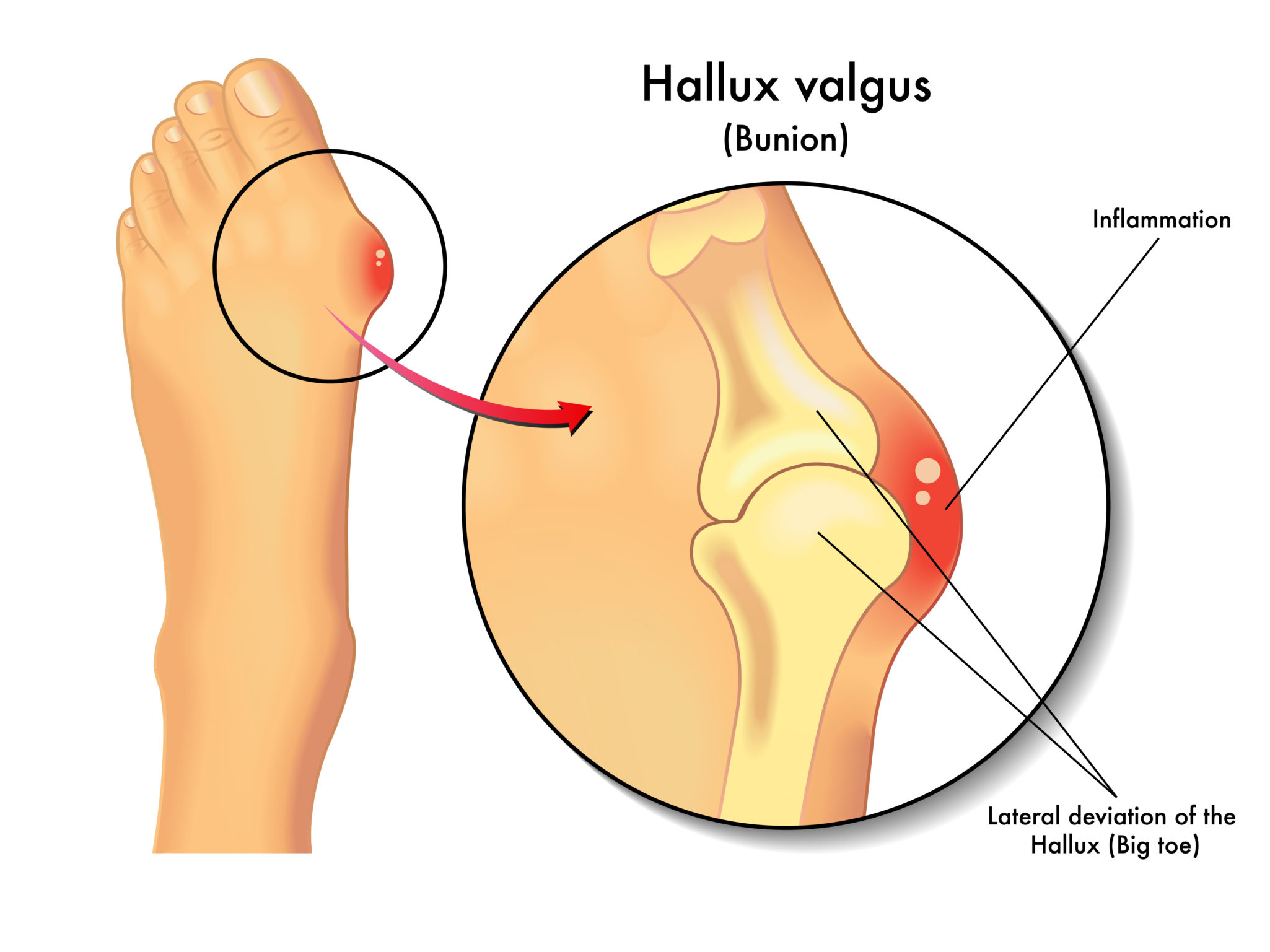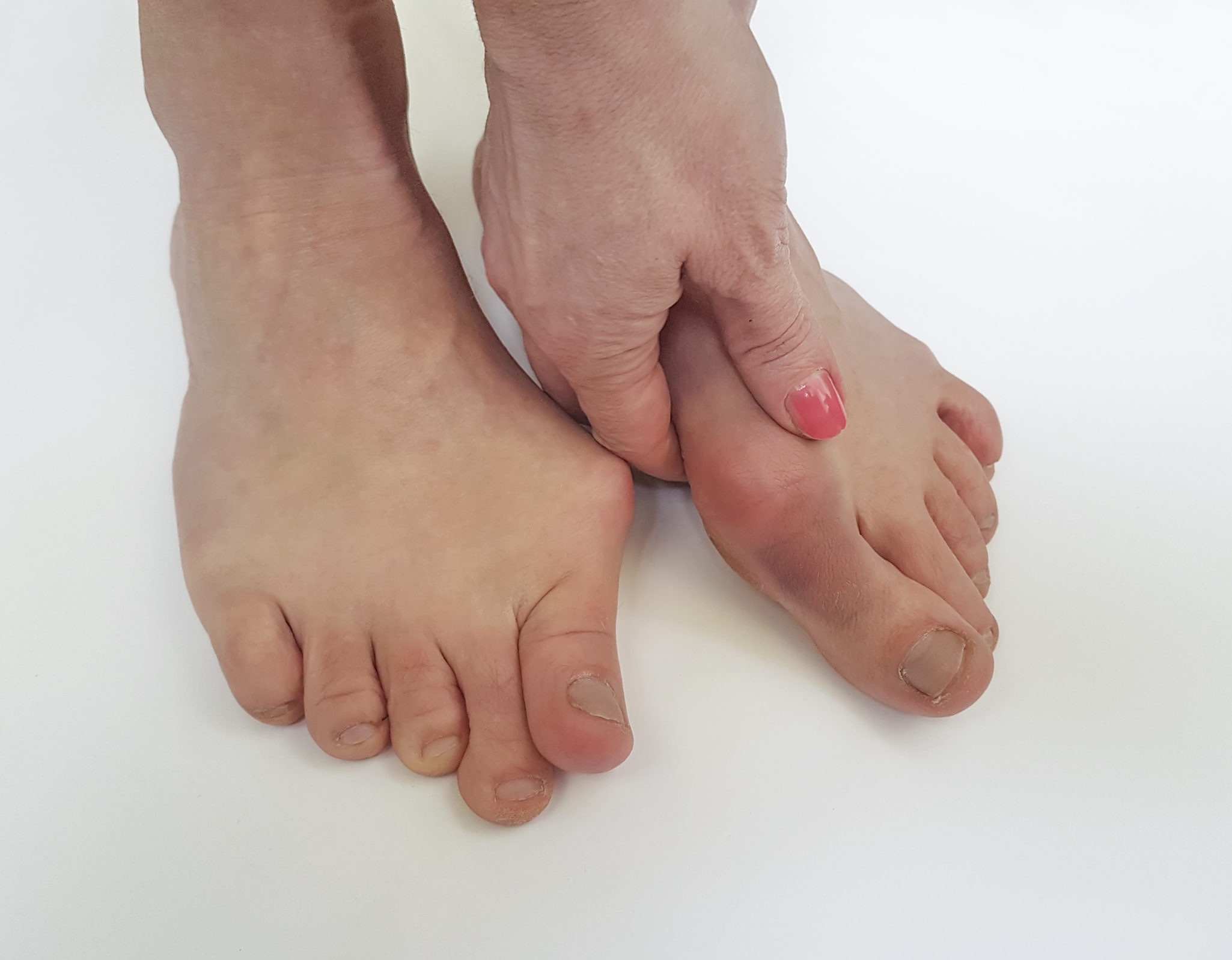Bunion Surgery Can Now Be Minimally Invasive
A bunion (or hallus valgus) is characterized by a hard bump on the side of the big toe, which is actually a deformity that begins at an unstable joint at the base of the toe. The metatarsophalangeal joint (or MTP joint) rotates out of alignment, causing the big toe to lean in and crowd the other toes while the joint at the side of the big toe juts outward to form a bunion.

There are a few causes of bunions - Genetics related to foot shape, injuries to the foot, or arthritis may play a role. It was long thought that, because women are more susceptible to developing bunions, high heels were a cause of bunions, but it is more likely that unnaturally sloped heels or ill-fitting footwear only aggravate the underlying condition.
Patients with bunions may have symptoms of redness, pain, stiffness, or numbness that gradually progress over time. The pain may prevent people from completing daily activities or may limit footwear options.
If any of this sounds like it applies to your foot, it may be time to ask your doctor about minimally invasive surgery to treat your bunion.
What is Minimally Invasive Surgery?
Minimally invasive surgery is performed through small incisions in the skin.
During the operation, the doctor will cut and shift the lower bone in your big toe over to improve the alignment of your lowest joint (the MTP joint).
The correction is held in place with zero-profile screws to reduce the amount that you feel the hardware.
Minimally invasive surgery allows overall cosmetic and mechanical improvement of your foot, while maintaining or even improving range of motion at the big toe joint.

What Should I Expect After Surgery?
Your doctor will decide the best recovery options for you. You should expect to keep the area bandaged for 1 to 2 weeks. Some people will need to keep weight off the toe area immediately after surgery while others may partially bear weight. Your doctor may suggest that you wear a special boot or hard shoe to protect your foot.
By 4 to 6 weeks after surgery, you may be able to transition to stiff-soled shoes. Expect to resume light exercise like jogging, biking, or swimming at 8 to 10 weeks if there is no pain and X-rays show full bone healing.
Finally, your doctor may advise a full return to normal activities and normal shoe wear (including high heels) at 12 to 16 weeks.
Please be aware that surgery and recovery protocol may vary and any questions pertaining to the surgical procedure or postoperative protocol should be discussed with your surgeon.
Read What Our Patients Are Saying!
"Great Doctor. Great personality."
Click here to read more reviews.
Why Minimally Invasive Surgery?
Traditional bunion surgery requires large incisions, while minimally invasive bunion surgery is performed through very small skin incisions. Following minimally invasive surgery, you may experience less pain, faster recovery, and less visible scarring with a more cosmetically appealing result than traditional surgery.


